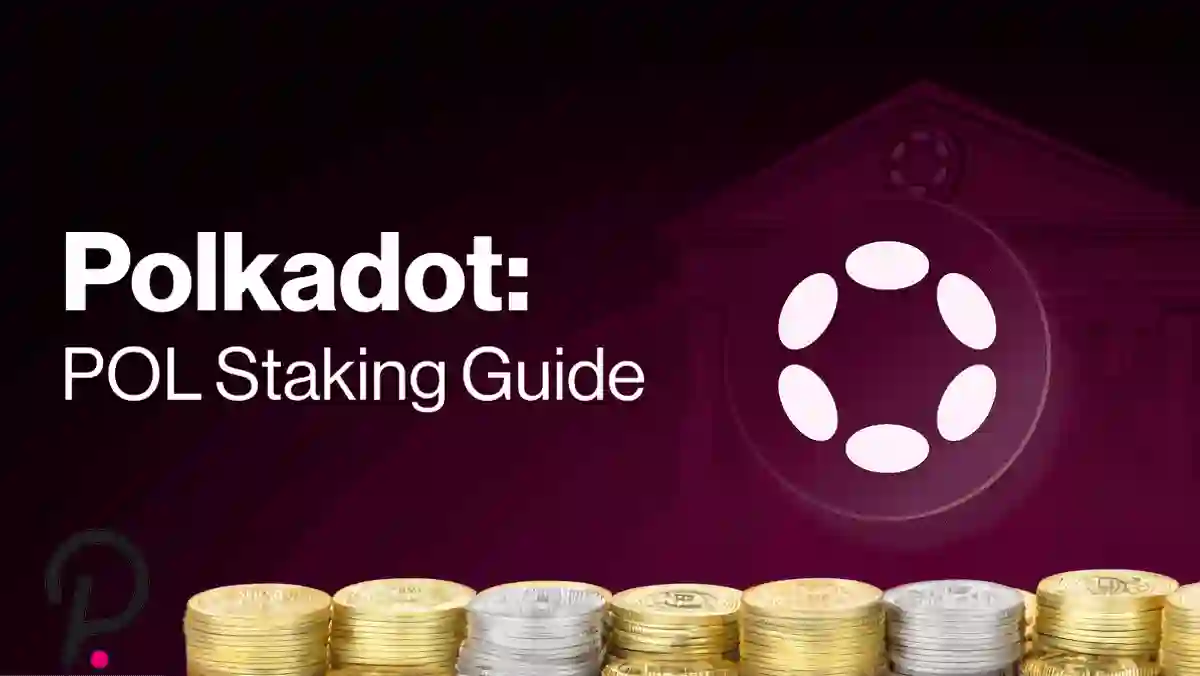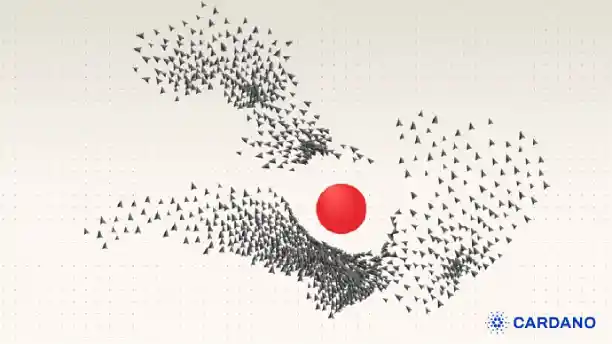12 min to read.
Master Polkadot Staking: Rewards, Tips & Platform Guide
How to stake Polkadot and where to stake?

Mastering Polkadot Staking: A Comprehensive Guide
Welcome to the definitive guide on Polkadot staking! Whether you're a novice in the cryptocurrency world or a seasoned investor looking to maximize your staking strategies, this guide covers everything you need to know about Polkadot staking. From setting up your digital wallet to choosing the right validators and understanding the reward mechanisms, we've compiled essential insights and step-by-step instructions to help you navigate the world of Polkadot staking effectively.
Polkadot's unique staking model not only helps secure the network but also offers participants a way to earn rewards on their holdings. The process involves locking up DOT tokens to support the network's operation and, in return, stakers earn rewards derived from network fees, inflation, and other factors. This guide will walk you through the fundamentals of staking Polkadot, optimizing your staking setup, and the latest trends and updates in the Polkadot ecosystem.
By the end of this guide, you'll have a thorough understanding of how to stake Polkadot on platforms like Kraken, Binance, and Coinbase, how to use tools like Polkadot.js, and how to assess and manage the risks associated with staking. Let's dive into the world of Polkadot staking and unlock the potential of your cryptocurrency investments.
Getting Started with Polkadot Staking
Staking Polkadot (DOT) is a rewarding yet complex process, suitable for both new entrants and experienced users looking to deepen their engagement with the Polkadot network. This section provides a foundational understanding of what Polkadot staking involves, how to stake Polkadot, and the initial steps you need to take to begin staking on platforms like Kraken, Coinbase, and Binance.

What is Polkadot Staking?
Staking is the process of actively participating in transaction validation (similar to mining) on a proof-of-stake (PoS) blockchain. On the Polkadot network, staking involves locking a certain amount of DOT tokens to support the network's security and operations. In return, stakers receive rewards derived from transaction fees, block rewards, and treasury inflations.
Setting Up Your Wallet
To stake Polkadot, you first need a digital wallet that supports DOT. Wallets like Polkadot.js, Ledger, and Trust Wallet are popular choices. Here's how to set up your wallet:
- Choose a wallet based on security features, user experience, and compatibility.
- Download and install the wallet application or extension.
- Create your wallet account, ensuring you safely store your recovery phrases.
How to Stake on Kraken, Coinbase, and Binance
Staking Polkadot on exchanges like Kraken, Coinbase, and Binance is a straightforward way to earn staking rewards without handling the technical details of Polkadot’s native staking features. Here’s a simple guide to get started:
- Kraken: Sign up and verify your account, deposit DOT into your account, navigate to the 'Staking' section, and select Polkadot to stake.
- Coinbase: After depositing DOT, use the Coinbase staking options available under your portfolio to begin staking.
- Binance: Binance offers flexible staking options, which can be accessed via the 'Earn' section. Choose your staking duration and the amount to stake.
Each platform offers different features and benefits, such as varying lock-up periods and staking rewards rates, so it’s crucial to review their specific staking terms and conditions.
Next Steps
Once you have set up your wallet and chosen your staking method, the next steps involve selecting validators. Validators are network participants who run nodes and validate transactions. Choosing reliable validators is crucial as they directly influence your staking rewards and the security of your staked DOT.
Remember, staking involves certain risks such as the potential for slashing if the validator misbehaves. It's important to perform due diligence on validator performance and reputation before delegating your DOT. Resources like Polkadot’s official website and community forums can provide additional insights into validator track records and staking strategies.
Practical Considerations for Polkadot Stakers
Engaging in Polkadot staking involves more than just earning rewards; it requires careful consideration of various practical factors to ensure both the security of your digital assets and the maximization of your staking benefits. This section discusses key considerations every Polkadot staker should be aware of, including the risks of slashing, the importance of understanding lock-up periods, and the nuances of staking on different platforms.
Understanding Slashing Risks
Slashing is a penalty imposed on stakers and validators for behaviors that undermine the network's security, such as double signing or network downtime. To minimize slashing risks:
- Choose validators with a proven track record of reliability and protocol compliance.
- Diversify your staking across multiple validators to mitigate potential losses.
- Stay informed about the validators’ performance and governance updates that might affect their operations.
Lock-Up Periods and Liquidity
Staking DOT involves a lock-up period during which your tokens cannot be transferred or sold. Understanding these periods is crucial for managing your investment's liquidity:
- Review the lock-up terms on your chosen platform, as they can vary from 28 days to longer periods depending on the staking option.
- Plan your financial needs around these periods to avoid liquidity issues.
Staking on Different Platforms
Choosing where to stake your DOT can significantly impact your staking experience and rewards:
- Kraken: Offers flexible and bonded staking options with competitive APYs, and staking can be initiated directly from the wallet with no minimum DOT requirement.
- Binance: Known for higher returns and flexible staking terms, but requires users to be attentive to the varying lock-up periods and reward rates.
- Direct Staking via Polkadot.js: Provides more control over your staking choices and potentially higher rewards but requires a higher level of technical understanding.
Safeguarding Your Investment
To protect your staked DOT and maximize your staking rewards, consider the following tips:
- Regularly update your wallet software and perform security checks.
- Use hardware wallets for enhanced security, especially if staking large amounts of DOT.
- Monitor the performance and status of your chosen validators through the Polkadot staking dashboard or third-party tools.
By considering these practical aspects, you can ensure a more secure and profitable staking experience on the Polkadot network. Regularly engaging with the Polkadot community and staying updated with the latest staking trends and updates can also provide valuable insights and enhance your staking strategy.
Understanding Polkadot Staking Rewards
Understanding how Polkadot staking rewards are calculated and distributed is crucial for any staker. This section will help you learn how to check and calculate your rewards, and compare the potential returns across various popular platforms like Kraken and Binance.
How to Check and Calculate Your Polkadot Staking Rewards
To effectively manage and optimize your Polkadot staking rewards, you need to know how to check and calculate them. Rewards on Polkadot are primarily influenced by several factors including the total amount staked on the network, inflation rate, and the performance of your selected validators. Here’s how you can keep track of your staking rewards:
- Polkadot Staking Dashboard: Access the official Polkadot Staking Dashboard to view real-time data on your staking rewards. This platform provides detailed insights into your rewards accumulation, validator performance, and more.
- Third-Party Tools: Utilize tools like Staking Rewards Calculator which offer estimations based on current network parameters and your staking setup.
Remember, the actual rewards can vary based on network conditions and changes in validator performance or network policies.
Comparison of Polkadot Staking Rewards Across Top Platforms
Different platforms can offer varying staking rewards, influenced by their operational structure, fees, and the staking options they provide. Here’s a look at how platforms like Kraken and Binance stack up:
- Kraken: Known for its user-friendly interface, Kraken offers flexible staking terms with rewards that can range from 7% to 12% APY, depending on market conditions and lock-up periods. Kraken also allows for a relatively easy unstaking process, which can be attractive for stakers looking for both yield and liquidity.
- Binance: Binance typically provides higher APYs, reaching up to 13.5% under certain conditions, but these come with varying lock-up periods and sometimes higher risks. Binance’s staking feature includes flexible and fixed terms, catering to different risk appetites and liquidity preferences.
Choosing where to stake your DOT requires a balance between the rewards offered, the reliability of the platform, and your own liquidity needs and risk tolerance.
Practical Considerations for Polkadot Stakers
Can You Stake Polkadot on Hardware Wallets Like Ledger?
Staking Polkadot using hardware wallets like Ledger is feasible and offers enhanced security for your digital assets. Hardware wallets store your private keys offline, significantly reducing the risk of hacking and unauthorized access. Here are the benefits and limitations:
- Benefits: Increased security due to offline storage of private keys; direct control over your staking operations without intermediary risks.
- Limitations: Setting up staking on hardware wallets can be more complex than using online platforms or software wallets. It may require a more thorough understanding of blockchain technology and staking mechanisms.
While the security benefits are significant, users must weigh these against the potential complexity of managing staking directly from a hardware wallet. Comprehensive guides and support are available on Ledger’s official website and other tech platforms to help users navigate this process.
Minimum Requirements and Risks: How Much Polkadot to Stake
To participate in Polkadot staking, a minimum amount of DOT is required, which can vary depending on the staking platform and the network's conditions. The risks associated with staking, such as slashing and liquidity issues, are also critical to consider:
- Minimum Staking Requirements: Some platforms may require a minimum amount of DOT to begin staking, which helps in maintaining efficient network operations and security.
- Risks:
- Slashing: If validators misbehave or fail to perform their duties, slashing penalties can be applied, affecting all stakers supporting that validator.
- Liquidity: Staked DOT are locked for a period, during which they cannot be sold or exchanged, impacting liquidity and potentially exposing stakers to volatility in DOT prices.
Understanding these requirements and risks is essential for managing your investments and expectations effectively. Regular updates and discussions on platforms like the Polkadot Network and analyses from sources like Cointelegraph provide valuable insights into the evolving landscape of Polkadot staking.
Polkadot Staking FAQs
Frequently Asked Questions About Polkadot Staking
Polkadot staking involves several common queries that many users have, from eligibility to staking methods and troubleshooting issues. Here are some of the most frequent questions:
- Who is eligible to stake Polkadot? Anyone holding DOT tokens and using a compatible wallet can participate in staking. There is no minimum DOT requirement for staking directly on some platforms, but exchanges might have their own minimums.
- Can I stake Polkadot on mobile wallets like Trust Wallet? Yes, mobile wallets like Trust Wallet support staking Polkadot. They offer a convenient way to stake directly from your smartphone, providing both accessibility and security.
- What should I do if I encounter issues while staking? Troubleshooting staking issues often involves checking your network connection, ensuring your wallet software is up to date, and verifying that you have sufficient DOT for staking. Contacting the support team of your staking platform or wallet can also provide direct assistance.
For more detailed information and additional FAQs, visiting platforms like the Kraken Exchange or the Polkadot Staking Dashboard can be very helpful.
Future of Polkadot Staking
What’s New and What’s Coming in Polkadot Staking
The Polkadot staking ecosystem is continually evolving with new features and updates designed to enhance user experience and network efficiency. Recent discussions in governance forums and community updates have highlighted several exciting developments:
- Enhanced Scalability: Upcoming updates aim to increase the scalability of staking, allowing more users to participate without compromising network performance.
- Improved Usability: Efforts are being made to simplify the staking process, making it more accessible to non-technical users. This includes user-friendly interfaces and streamlined operations.
- New Governance Features: Future updates include more robust governance mechanisms that allow stakers more say in the direction and operation of the network.
These advancements are discussed in detail on platforms like the Polkadot Network, where the community actively participates in shaping the future of staking.


